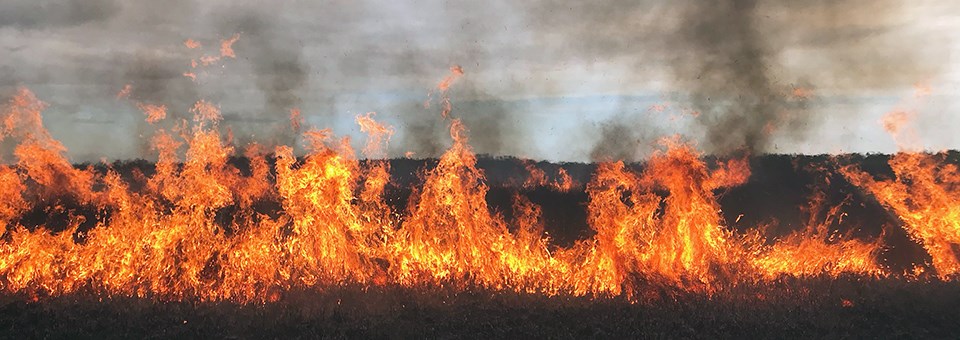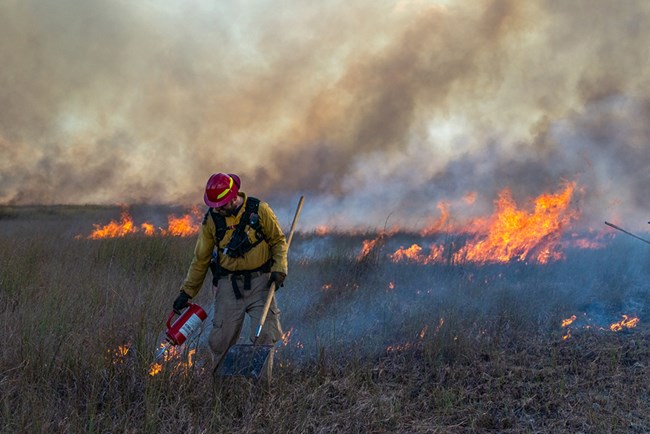Last updated: January 19, 2021
Article
Unusual Partnerships on the Southern United States Border

NPS/M GUE
Everglades National Park’s ability to successfully build partnerships with outside agencies like the Florida Forest Service, South Florida Water Management (SFWMD), US Customs and Border Protection (USCBP), USDA Research Stations, and Florida International University (FIU) has produced substantial benefits in south Florida. In FY20, these partnerships have contributed to reducing over 9,000 acres of hazardous fuel loads across Everglades National Park’s jurisdictional boundary, reduced the spread of exotic species, improved our understanding of the important role fire plays within the ecosystem, and ultimately created a more efficient and effective fire management strategy for south Florida.

©Ian Wilson. Used with permission.
When you hear the words US southern border, most people don’t think of Everglades National Park. However, along the west and south coast of Everglades National Park, resides 2,429 miles of remote United States shoreline. This wilderness gateway is located three miles from the US border separated only by an open waterway. Everglades Fire Management has historically utilized prescribed fire in the area to reduce hazardous fuels to manage the risk of large-scale wildfire and to prevent the spread of exotic plant species like Lygodium microphyllum.
Over the past two years, Everglades NP and the USCBP have collaborated to reduce fuel loading in these fire adapted ecosystems. The Southern Border Initiative grant and the partnership with CBP simultaneously supports the health of the ecosystem while minimizing fuel cover making it easier to visually patrol and monitor the southern border of the United States. Those efforts contributed to 107 citations and reduced both wildfire occurrence and growth.
Partnerships like these, with federal and state agencies, are what has assisted EVER in continuing its prescribed fire strategy to reintroduce fire into the park on a landscape level, work across jurisdictional boundaries to reduce the risk of wildfires on private and commercial properties, as well as protect the valuable resources within the park boundaries.
The partnerships established today, and the new partnerships of tomorrow, will continue to be a critical component of the Everglades Fire and Aviation Management strategy. These relationships will play a substantial role as we continue to implement the current fire management strategy to improve ecological resilient landscapes and develop new practices to meet the fire management challenges of the next century.
